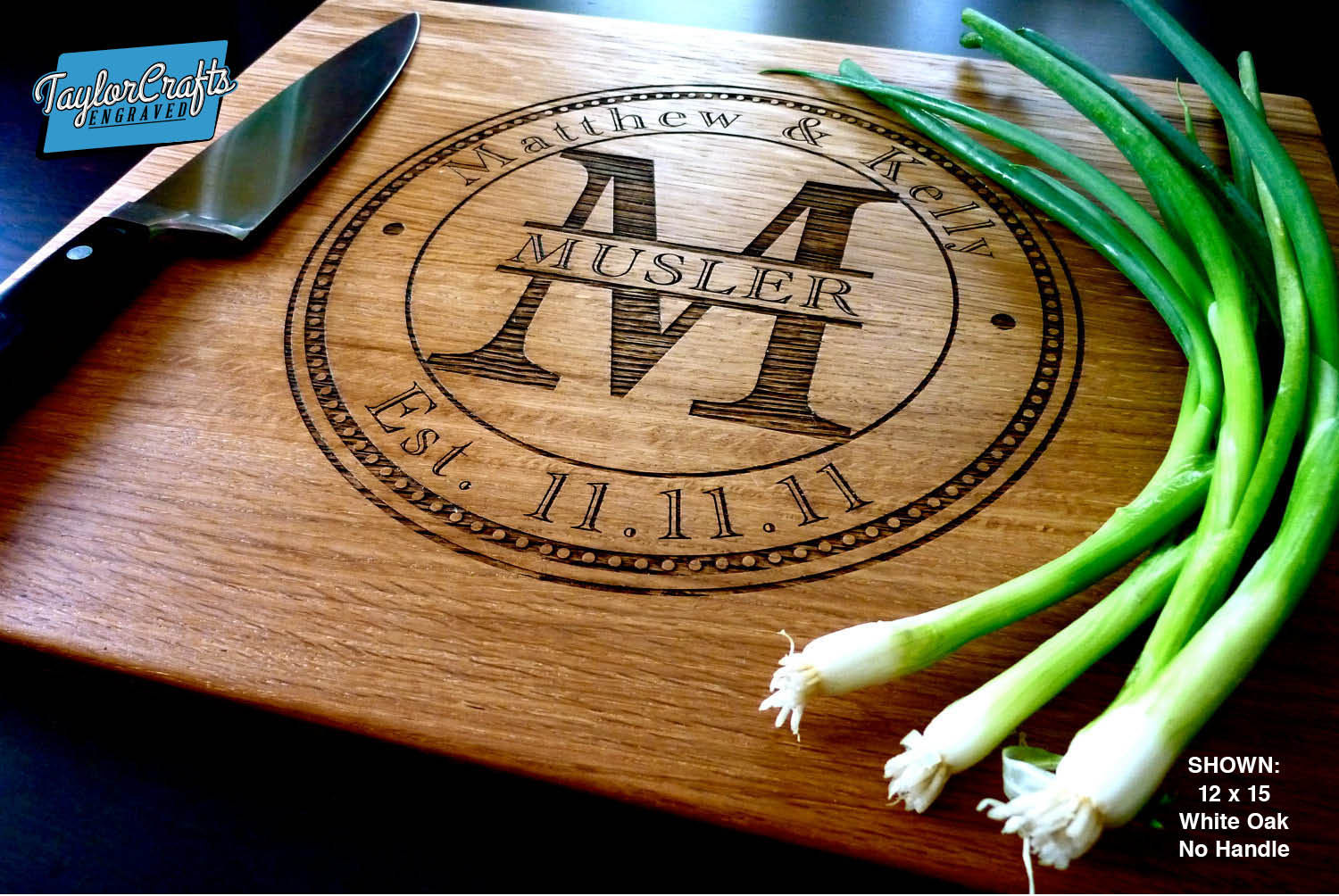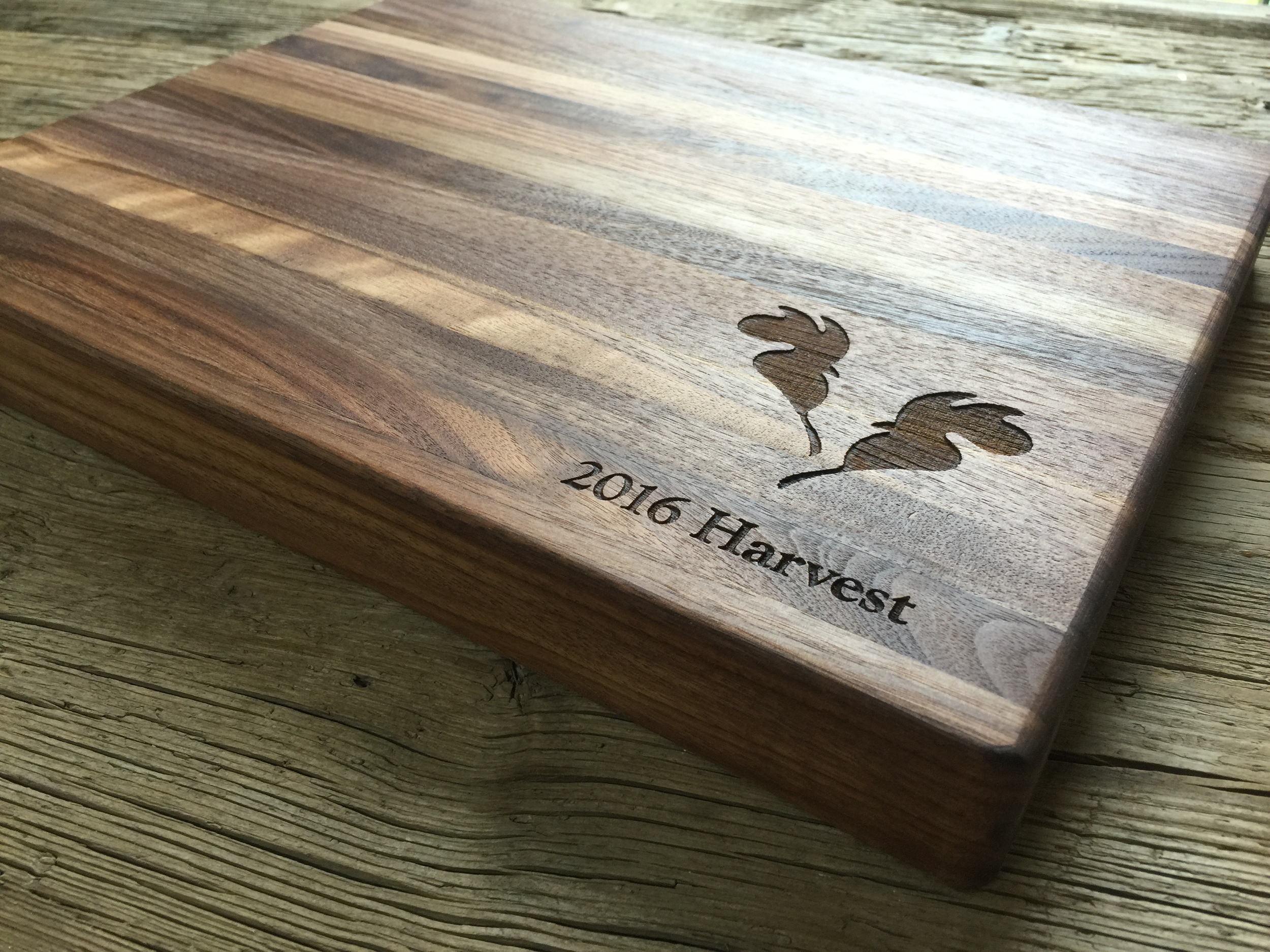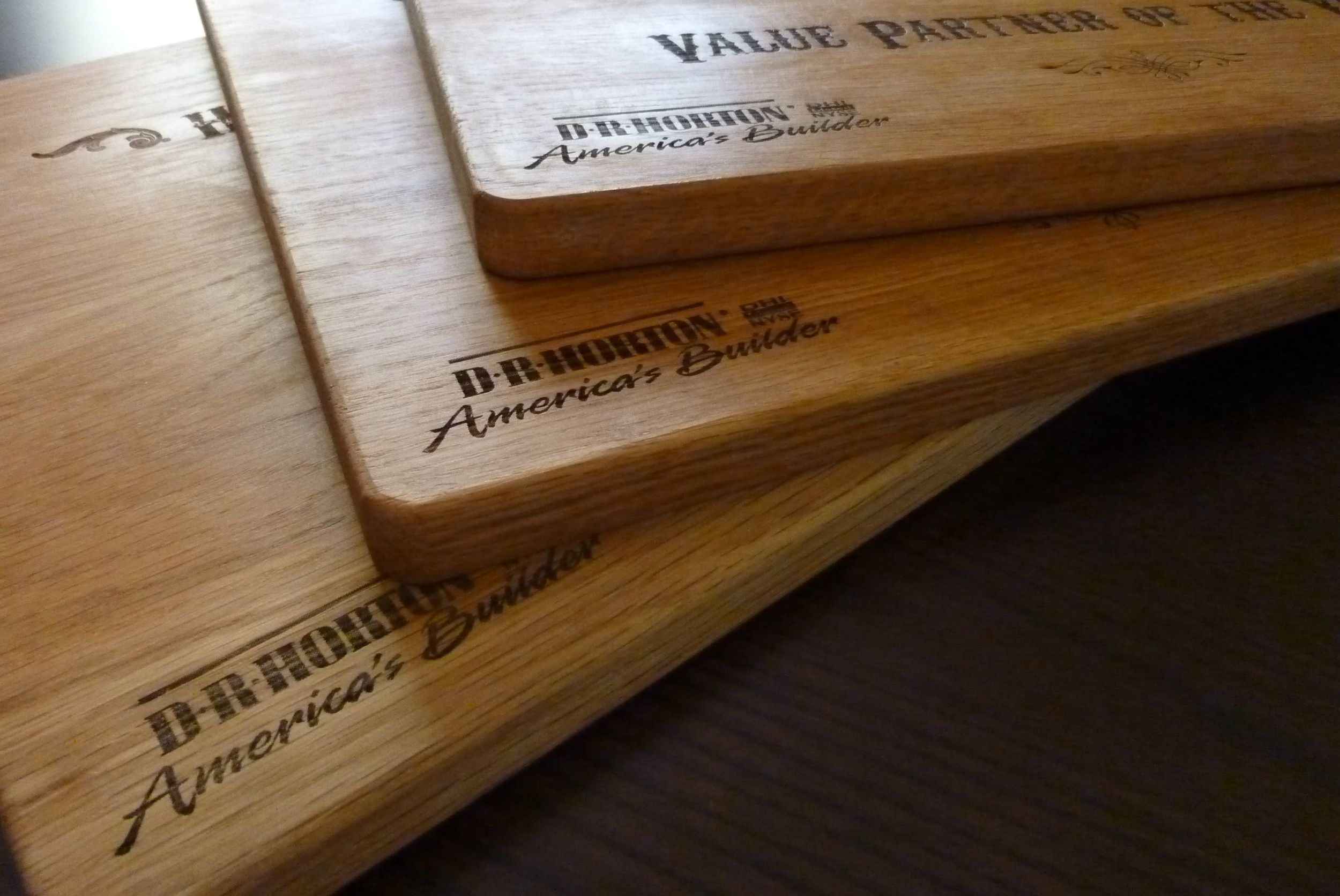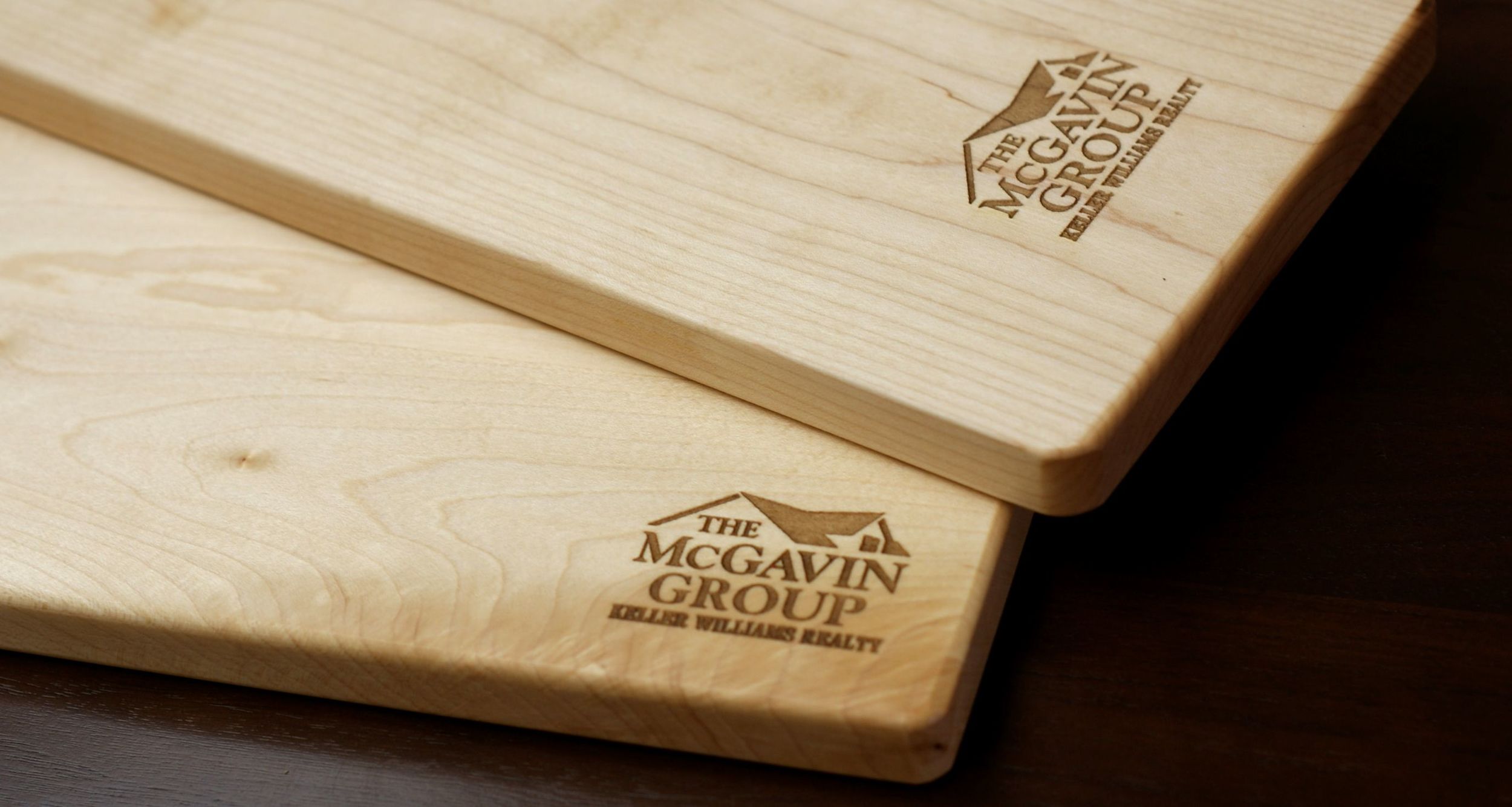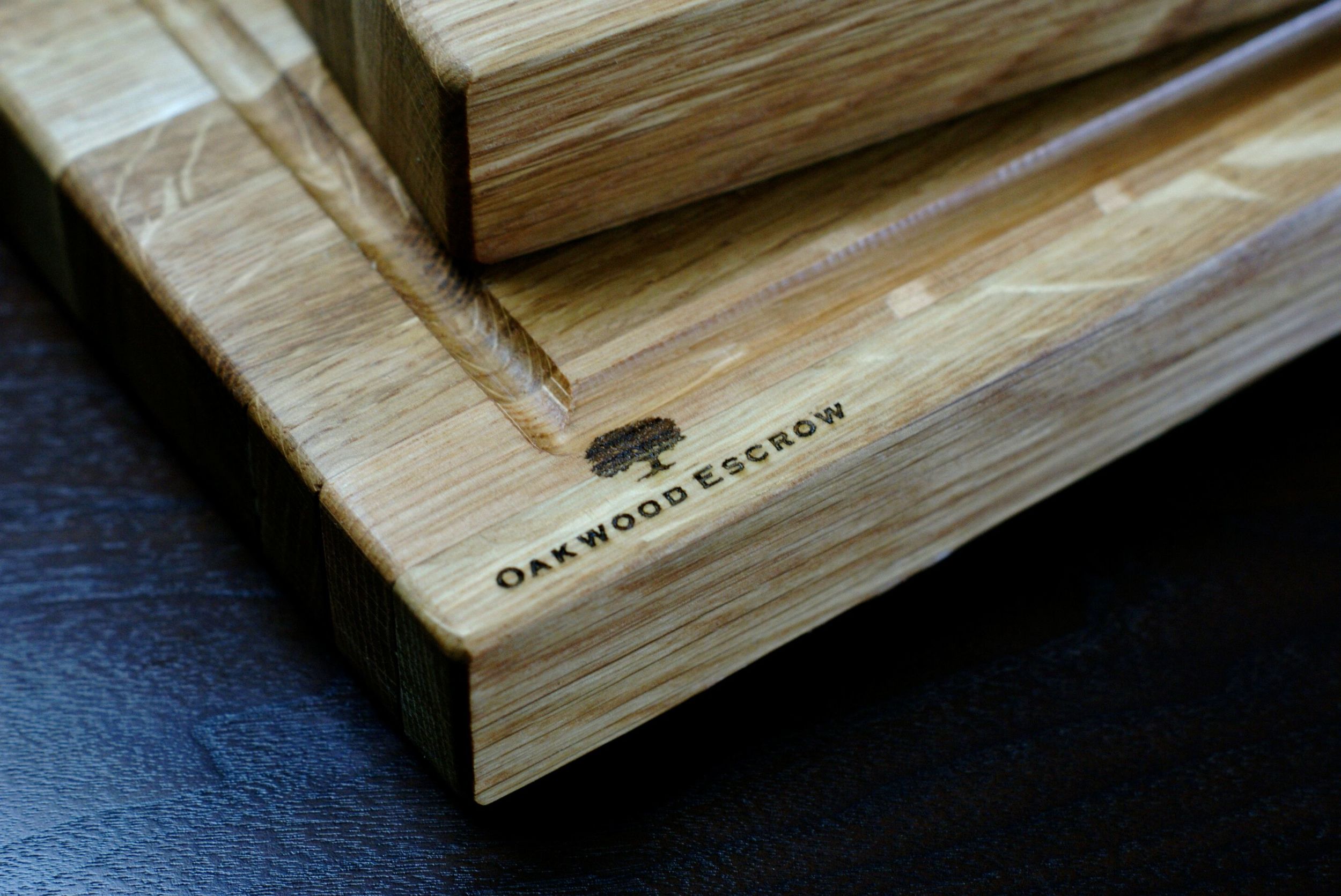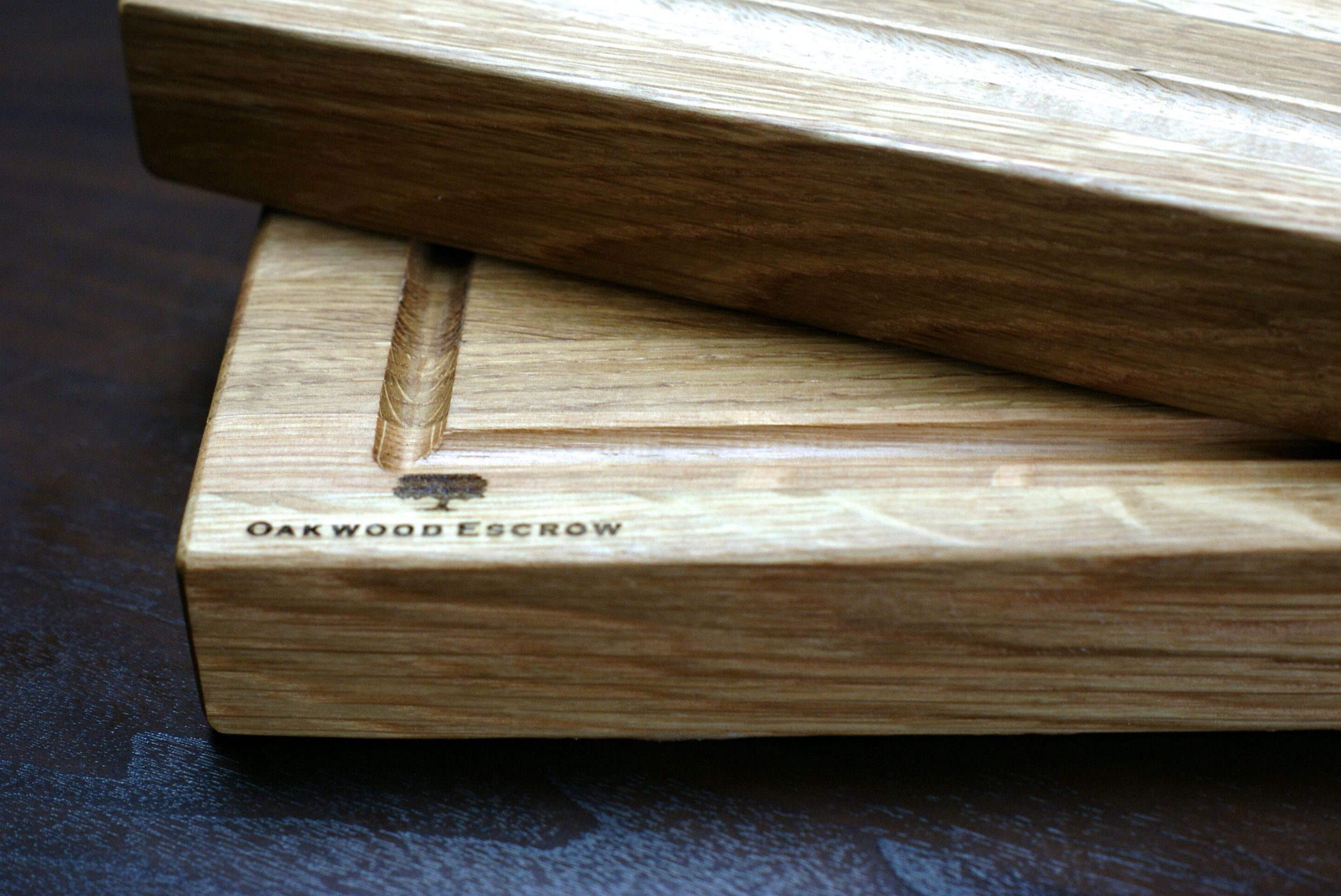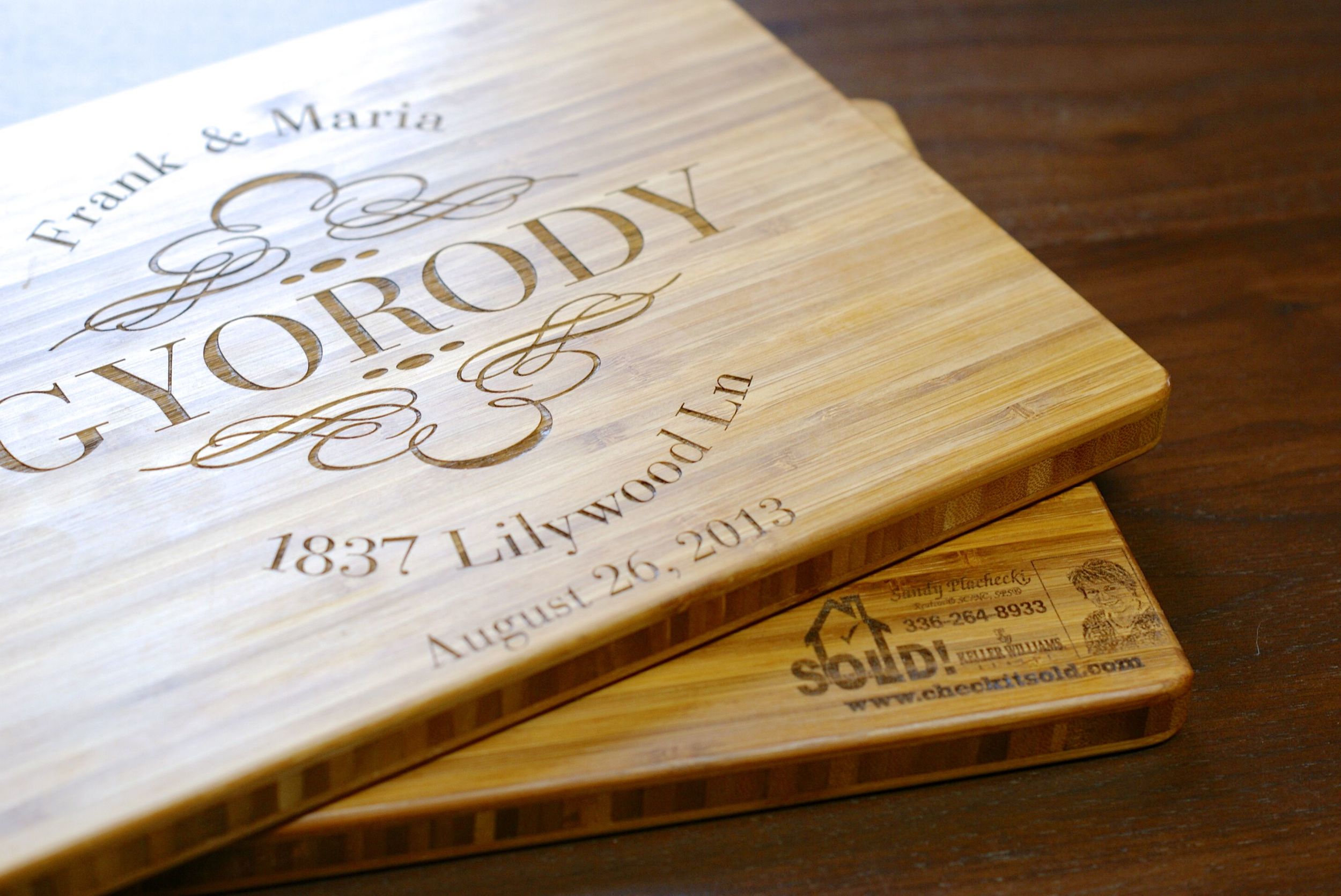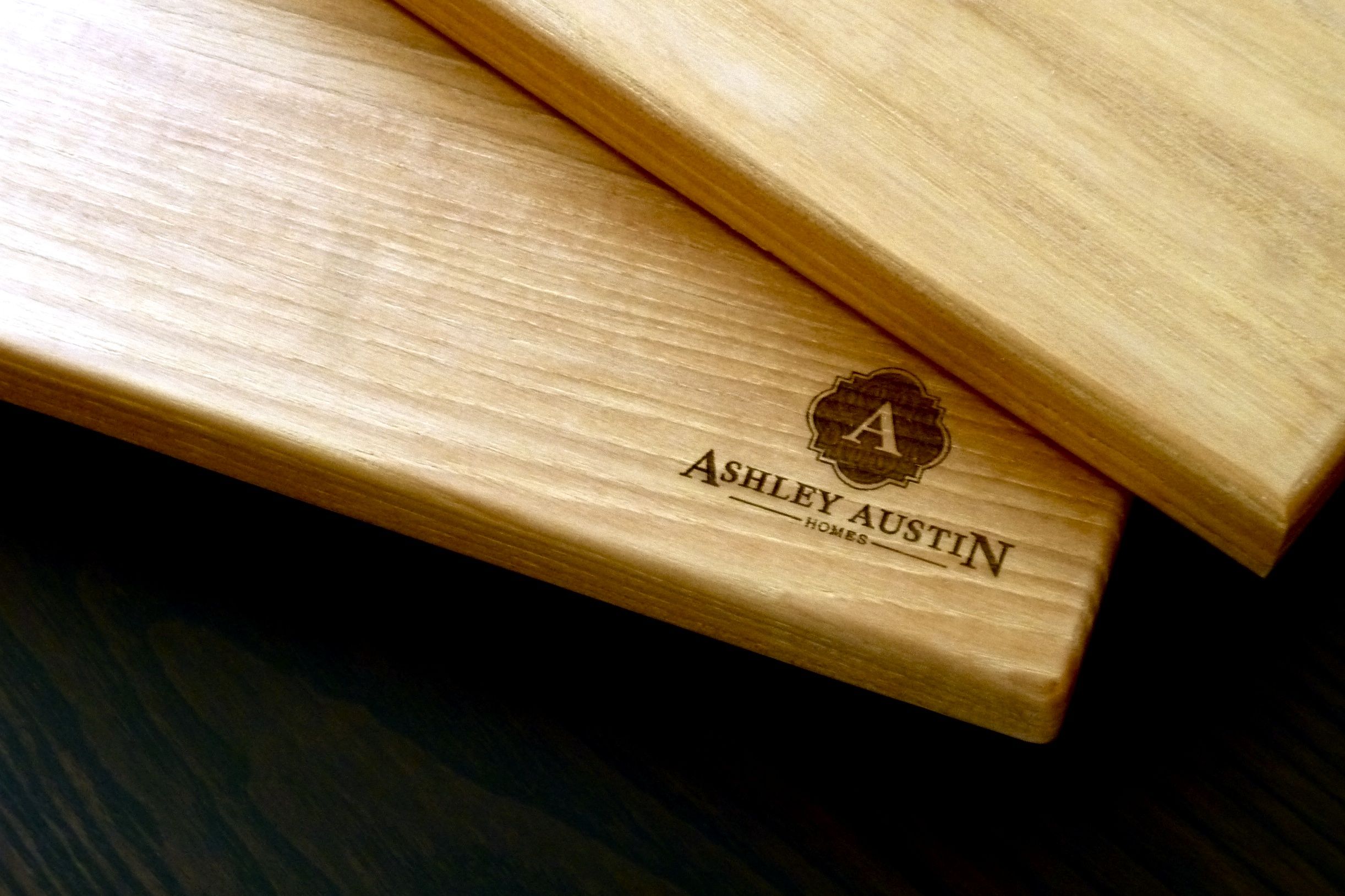Wood selection has always been the most important part of selecting a good cutting board. Classical cutting boards have normally been made of out dense woods, such as maple, walnut or cherry vs porous woods such as red oak. Choosing the right wood for how it is going to be used, will help keep your cutting board keepsake protected for life.
Wood alone can't protect your board from abuse and neglect. All wood cutting boards usually require regular maintenance with mineral oil or beeswax to keep the wood from cracking and warping. Additionally, we do not recommend putting any of our boards in the dishwasher, or letting it soak in water for a long period of time. This will lead to splitting and damage to the wood.
This list is meant to inform, but is not exhaustive. There is a lot of information out there on the different woods, how they are grown and harvested. The list is in alphabetical order starting with Bamboo and ending with Walnut.
Bamboo has a hardness of 1180 on the Janka hardness scale.
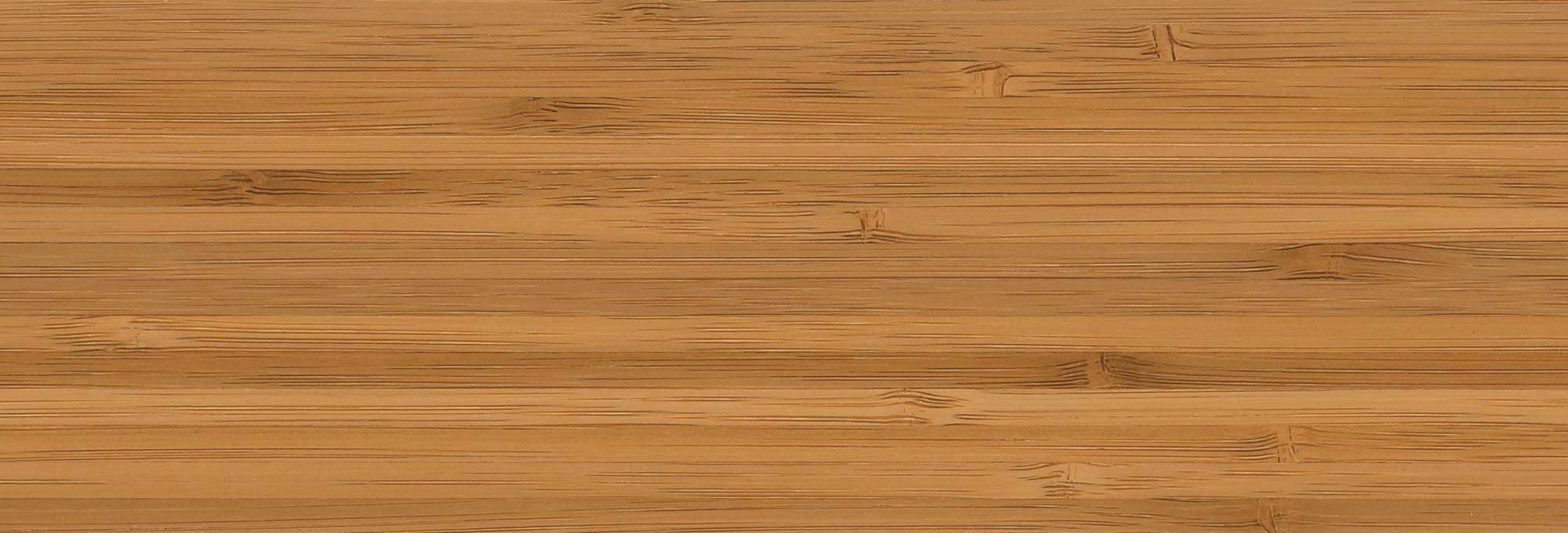 One main reason bamboo cutting boards have gained popularity in recent years is because they are almost maintenance free due to the hard density of the wood. Bamboo resists retaining water and as a result, will not warp or crack as easily as normal wood. That said, it’s not recommended to put a bamboo board (let alone any cutting board) in a dishwasher due to the extreme heat. Only thicker, plastic cutting boards are considered safe for dishwashers since they generally won’t crack or warp.
One main reason bamboo cutting boards have gained popularity in recent years is because they are almost maintenance free due to the hard density of the wood. Bamboo resists retaining water and as a result, will not warp or crack as easily as normal wood. That said, it’s not recommended to put a bamboo board (let alone any cutting board) in a dishwasher due to the extreme heat. Only thicker, plastic cutting boards are considered safe for dishwashers since they generally won’t crack or warp.
As a naturally light wood with a fine grain, many chefs love the natural look of bamboo and the modern elegance that it conveys. Many designer kitchens now sport large bamboo cutting boards as the grain can be uniform and homogenous, leading to a chic and tasteful look for a stylish kitchen.
Plus, without having to worry about wood scarring, your bamboo board should continue to look smooth and sleek for a long time. In addition, due to the resistance to absorbing water, bamboo is less likely to crack and split like regular wood boards. Bamboo also resists staining, which is often an issue with meats and acidic plants such as tomatoes.
Properly sourced, bamboo is a highly renewable resource. Most people don’t know that bamboo is technically a grass instead of tree, which is appropriate due to the fact that it’s one of the fastest growing plants on earth. In fact, a normal bamboo shoot can become fully mature within three to six years before it is cut for harvest. On the other hand, maple trees can take over 30 years to fully mature and can live to over 150 years.
Different pieces of Bamboo Engrave differently. Sometimes the bamboo burns dark and provides a great dark contrast. Other pieces are harder, therefore, don't engrave with a dark contrast. Still readable, but just doesn't have the obvious burn. Since Bamboo is technically a grass, each blade can burn differently.
European Steamed Beech has a hardness of 1450 on the Janka hardness scale.
 Beech is an unknown workhorse in the cutting board world. We know this because we have put beech to the test for many years in our kitchen. So very few cutting board companies offer this strong and durable wood as a cutting board, and we are often at a loss as to why that is. We have put our beech boards through the wringer, setting them in water too long, and not maintaining them as they should be maintained. We absolutely love our beech boards, and while the wood isn't as exotic as walnut or mahogany, you won't be disappointed in the durability of our beech boards.
Beech is an unknown workhorse in the cutting board world. We know this because we have put beech to the test for many years in our kitchen. So very few cutting board companies offer this strong and durable wood as a cutting board, and we are often at a loss as to why that is. We have put our beech boards through the wringer, setting them in water too long, and not maintaining them as they should be maintained. We absolutely love our beech boards, and while the wood isn't as exotic as walnut or mahogany, you won't be disappointed in the durability of our beech boards.
Beech coloring is typically a pale cream color, sometimes with a pink or brown hue. Veneer tends to be slightly darker colored, as slicing the veneer usually requires the wood to be prepared with steam, which gives the wood a more golden tone. Flat sawn surfaces tend to be very plain, while quarter sawn surfaces exhibit a silvery fleck pattern. The wood is typically steamed as part of the drying process, which helps produce a even / uniform color.
Beech is an important and widely-used hardwood in Europe. Its hardness, wear-resistance, strength, and excellent capabilities—coupled with its low price—make this hardwood a mainstay for many European woodworkers. Depending on soil conditions, European Beech can grow to very large sizes, and wide, long lumber is commonly available for use.
Beech engraves with a beautiful, dark brown contrast to the pink-brown board. Even though it is a hard wood, it does burn a smooth, deep engraving.
Cherry has a hardness of 950 on the Janka hardness scale.
 Cherry heartwood varies from rich red to reddish-brown. The sapwood is white. It has a fine, straight grain with narrow brown pith flecks and small gum pockets. It has a smooth texture.
Cherry heartwood varies from rich red to reddish-brown. The sapwood is white. It has a fine, straight grain with narrow brown pith flecks and small gum pockets. It has a smooth texture.
Cherry is a very popular American hardwood. It sands to a very pale pink-brown hue. Initially it is a very light brown, with occasional small knots or sap pockets. As it is exposed to light, it gradually darkens, with obvious change in the first few weeks. In months it will become a rich light brown, and in a year or two it will be a medium brown. It will probably never become the classic "dark cherry" which was caused by old fashioned finishes darkening as much as the wood. Most finishes that state “dark cherry” usually use maple or birch wood with a dark cherry finish.
Cherry is a beautiful wood, and makes for a great cutting board, but it is softer than some of the other woods we offer such as the bamboo, beech, and maple. Components made of Cherry generally consist of approximately 25% sapwood and 75% heartwood. Therefore, there will usually be a bit of sapwood in each board.
Cherry has a beautiful even grain, and is beautiful with an oiled finish. The wood is not toxic and makes for beautiful cutting boards that will only become more beautiful with time and care.
Engraved cherry wood is smooth and deep red. The contrast if cherry is much like the beech. The engraving is smooth and generally deep.
African Mahogany has a hardness of 830 - 1300 on the Janka hardness scale.
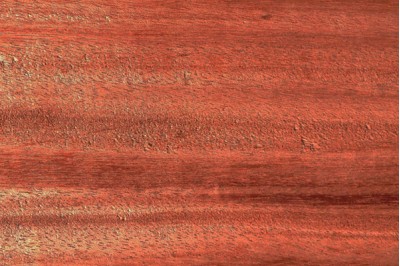 Heartwood color is variable, ranging from a very pale pink to a deeper reddish brown, sometimes with streaks of medium to dark reddish brown. Color tends to darken with age. Quarter sawn surfaces can also exhibit a ribbon-stripe appearance (which you will see in some of our listing photos).
Heartwood color is variable, ranging from a very pale pink to a deeper reddish brown, sometimes with streaks of medium to dark reddish brown. Color tends to darken with age. Quarter sawn surfaces can also exhibit a ribbon-stripe appearance (which you will see in some of our listing photos).
There is often a lot of color variation in this mahogany. There can also be a luminosity in the grain, which will provide a shimmery appearance in the grain of the wood.
Engraved African Mahogany will reveal a deep, nearly black engraving, which is beautiful with the red/purple color of the wood.
Hard Maple has a hardness of 1450 on the Janka hardness scale.
 Maple trees are common in North America, Africa, Europe and Asia. Since maple trees are endemic to all the major regions of the world, the presence of lumber mills specializing in maple tree lumber production are abundant.
Maple trees are common in North America, Africa, Europe and Asia. Since maple trees are endemic to all the major regions of the world, the presence of lumber mills specializing in maple tree lumber production are abundant.
There are two types of maple lumber – soft maple lumber and hard maple lumber. Hard Maple, which is what we use for both our boards and blocks, is the Queen bee of woods in professional kitchens. Maple is popular choice because of its durability and density. It also has an natural antimicrobial benefit to it.
Maple cutting boards are durable and strong enough to withstand daily exposure to knives in addition to looking very beautiful. The wood also ensures that not only does the board not suffer deep scratches etc., but it also protects the sharpness of the knives that are used. Hard maple can last longer than most types of lumber with a service span of 50 to 100 years.
You can't go wrong with a Maple board, especially for someone who plans on using it on a regular basis.
Sapele has a hardness of 1510 on the Janka hardness scale.
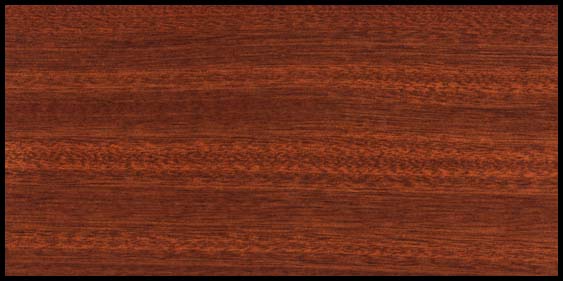 The durability and beautiful graining of Sapele warms any kitchen through its unmatched luminosity. Get the look of Mahogany with the strength and resilience of this exotic wood.
The durability and beautiful graining of Sapele warms any kitchen through its unmatched luminosity. Get the look of Mahogany with the strength and resilience of this exotic wood.
Heartwood is a medium to dark reddish brown or purplish brown. Color tends to darken with age. Sapele is often used as an alternative to genuine mahogany, sapele shares many of that hardwood's classic features. The wood is moderately durable - more so than a true African mahogany -- similar in color, and about as strong as oak. It is almost twice as hard as genuine mahogany!
Sapele can be described as the 'cream of the crop' of African hardwoods, both because of its popularity and usefulness, and also because of its sustainability and size.
White Oak has a hardness of 1360 on the Janka hardness scale.
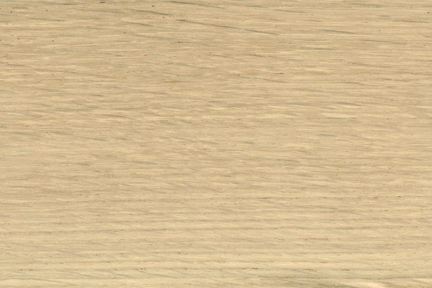 White oak is similar in color and appearance to European oak. The sapwood of American white oak is light colored and the heartwood is light to dark brown. White oak is mostly straight grained with a medium to coarse texture, with longer rays than red oak.
White oak is similar in color and appearance to European oak. The sapwood of American white oak is light colored and the heartwood is light to dark brown. White oak is mostly straight grained with a medium to coarse texture, with longer rays than red oak.
The coloring in white oak is varied. Separate boards of white oak lumber may be dark brown, light brown, or brown with yellow-white tones. Wood sealer tend to beautifully enhance the appearance of white oak.
White oak can vary in color, texture, characteristics and properties according to the growing region.
White is a rustic wood, with a rustic appeal. If you don't like rustic, or variations in color and graining, then white oak isn't for you. We love the heavy, solid weight of white oak as well as the rustic colorings.
Engraving White oak offers a beautiful contrast, but it can have marked graining that will be revealed. The burning process of engraving will darken the wood, which allows for easy readability.
Walnut has a hardness of 1010 on the Janka hardness scale.
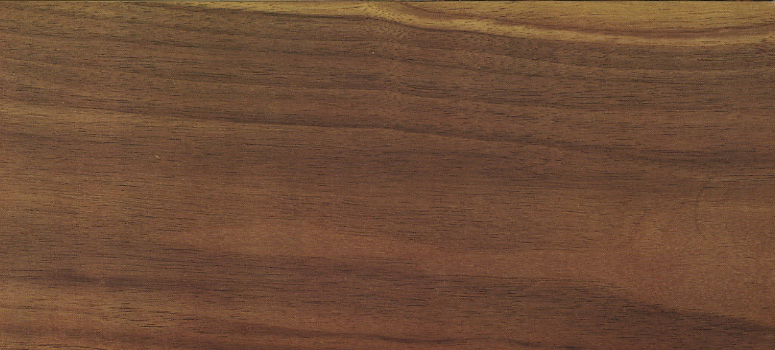 Heartwood can range from a lighter pale brown to a dark chocolate brown with darker brown streaks. Color can sometimes have a grey, purple, or reddish cast. Sapwood is pale yellow-gray to nearly white. Figured grain patterns such as curl, crotch, and burl are also seen.Black Walnut has a faint, mild odor. Although severe reactions are quite uncommon, Black Walnut has been reported as a sensitizer. Usually most common reactions simply include eye and skin irritation. It would be hard to overstate Black Walnut’s popularity among woodworkers in the United States. Its cooperative working characteristics, coupled with its rich brown coloration puts the wood in a class by itself among temperate-zone hardwoods. To cap it off, the wood also has good dimensional stability, shock resistance, and strength properties.
Heartwood can range from a lighter pale brown to a dark chocolate brown with darker brown streaks. Color can sometimes have a grey, purple, or reddish cast. Sapwood is pale yellow-gray to nearly white. Figured grain patterns such as curl, crotch, and burl are also seen.Black Walnut has a faint, mild odor. Although severe reactions are quite uncommon, Black Walnut has been reported as a sensitizer. Usually most common reactions simply include eye and skin irritation. It would be hard to overstate Black Walnut’s popularity among woodworkers in the United States. Its cooperative working characteristics, coupled with its rich brown coloration puts the wood in a class by itself among temperate-zone hardwoods. To cap it off, the wood also has good dimensional stability, shock resistance, and strength properties.
As a cutting board, walnut is a hard and durable wood as well as a favorite among the American Hardwoods. Its deep brown color is a favorite among people who enjoy the richness of dark woods. Engraving can vary depending the darkness of the walnut. A really dark piece of walnut can make reading any engraving more difficult because there isn't a big contrast when the wood is burned during the engraving process. We don't recommend Walnut for designs with small fonts such as a recipe board.
